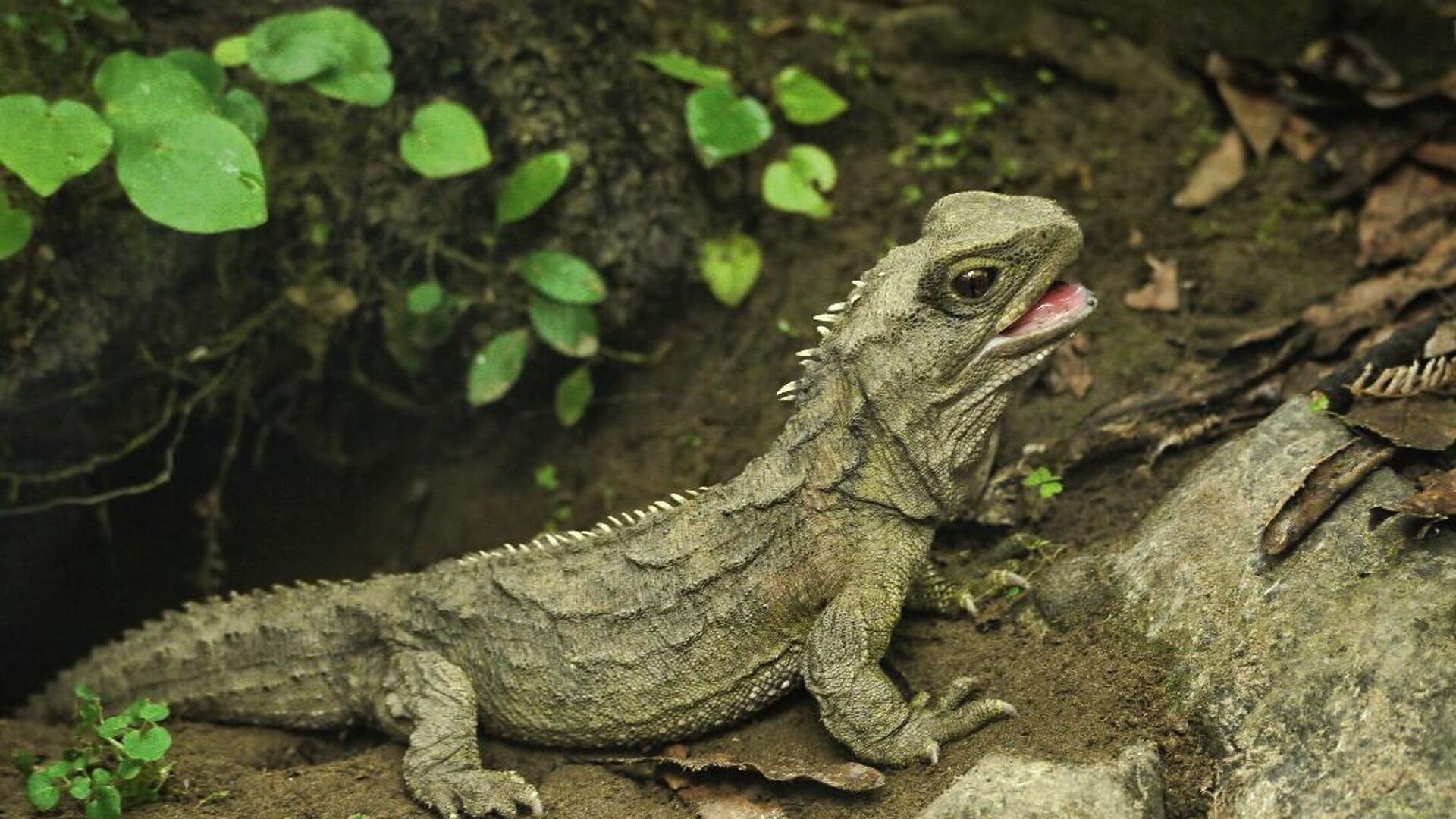https://sputnikglobe.com/20220919/extinct-prehistoric-reptile-that-lived-among-dinosaurs-discovered-in-new-zealand-1100968635.html
Extinct Prehistoric Reptile That Lived Among Dinosaurs Discovered in New Zealand
Extinct Prehistoric Reptile That Lived Among Dinosaurs Discovered in New Zealand
Sputnik International
The new discovery revealed that the tuatara, the prehistoric reptile which has almost entirely been replaced by lizards, would have been about 16 centimeters... 19.09.2022, Sputnik International
2022-09-19T17:34+0000
2022-09-19T17:34+0000
2022-09-20T06:51+0000
discovery
reptile
reptiles
species
new species
extinct species
endangered species
rare species
lizard
jurassic park
https://cdn1.img.sputnikglobe.com/img/07e6/09/13/1100978474_0:128:1080:736_1920x0_80_0_0_be4dc61acfc98baddc3593e58776a6f9.jpg
A new discovery of an extinct species of lizard-like reptile that belonged to the same ancient lineage as New Zealand’s living tuatara reptile has left researchers stunned.Smithsonian researchers published their findings in the Journal of Systematic Palaeontology and revealed that the new species, called Opisthiamimus Gregori, once inhabited Jurassic North America about 150 million years ago alongside dinosaurs like Stegosaurus and Allosaurus.Matthew Carrano, the curator of the National Museum of Natural History’s Dinosauria, said in the research findings that the most important aspect of the tuatara is that it represents an enormous evolutionary story.Carrano further added that although the tuatara looks a bit like a particularly stout iguana, it and its newly discovered relative are in fact not lizards at all.According to the research, the discovery of the new species comes from a handful of specimens, one of which was an incredibly complete and well-preserved fossil skeleton excavated from a site centered around an Allosaurus nest in US' Wyoming state’s Morrison Formation.From being diverse and numerous in its numbers in the Jurassic to now only a few tuataras surviving in New Zealand, researchers are further investigating to understand why this animal’s ancient order of reptiles was winnowed down.
Sputnik International
feedback@sputniknews.com
+74956456601
MIA „Rossiya Segodnya“
2022
Sangeeta Yadav
https://cdn1.img.sputnikglobe.com/img/07e4/08/1b/1080292803_0:121:960:1081_100x100_80_0_0_7490b319dab9611e309056b177265184.jpg
Sangeeta Yadav
https://cdn1.img.sputnikglobe.com/img/07e4/08/1b/1080292803_0:121:960:1081_100x100_80_0_0_7490b319dab9611e309056b177265184.jpg
News
en_EN
Sputnik International
feedback@sputniknews.com
+74956456601
MIA „Rossiya Segodnya“
Sputnik International
feedback@sputniknews.com
+74956456601
MIA „Rossiya Segodnya“
Sangeeta Yadav
https://cdn1.img.sputnikglobe.com/img/07e4/08/1b/1080292803_0:121:960:1081_100x100_80_0_0_7490b319dab9611e309056b177265184.jpg
discovery, reptile, reptiles, species, new species, extinct species, endangered species, rare species, lizard, jurassic park, jurassic-era, jurassic world, jurassic park
discovery, reptile, reptiles, species, new species, extinct species, endangered species, rare species, lizard, jurassic park, jurassic-era, jurassic world, jurassic park
Extinct Prehistoric Reptile That Lived Among Dinosaurs Discovered in New Zealand
17:34 GMT 19.09.2022 (Updated: 06:51 GMT 20.09.2022) The new discovery revealed that the tuatara, the prehistoric reptile which has almost entirely been replaced by lizards, would have been about 16 centimeters from nose to tail, fitting curled up in the palm of an adult human hand. It likely survived on a diet of insects and other invertebrates.
A new discovery of an extinct species of lizard-like reptile that belonged to the same ancient lineage as New Zealand’s living tuatara reptile has left researchers stunned.
Smithsonian researchers published their findings
in the Journal of Systematic Palaeontology and revealed that the new species, called Opisthiamimus Gregori, once inhabited Jurassic North America about 150 million years ago alongside dinosaurs like Stegosaurus and Allosaurus.
Matthew Carrano, the curator of the National Museum of Natural History’s Dinosauria, said in the research findings that the most important aspect of the tuatara is that it represents an enormous evolutionary story.
“Even though it looks like a relatively simple lizard, it embodies an entire evolutionary epic going back more than 200 million years,” Carrano said.
Carrano further added that although the tuatara looks a bit like a particularly stout iguana, it and its newly discovered relative are in fact not lizards at all.
"They are actually rhynchocephalians, an order that diverged from lizards at least 230 million years ago, Carrano said.
According to the research, the discovery of the new species comes from a handful of specimens, one of which was an incredibly complete and well-preserved fossil skeleton excavated from a site centered around an Allosaurus nest in US' Wyoming state’s Morrison Formation.
From being diverse and numerous in its numbers in the Jurassic to now only a few tuataras surviving in New Zealand, researchers are further investigating to understand why this animal’s ancient order of reptiles was winnowed down.



